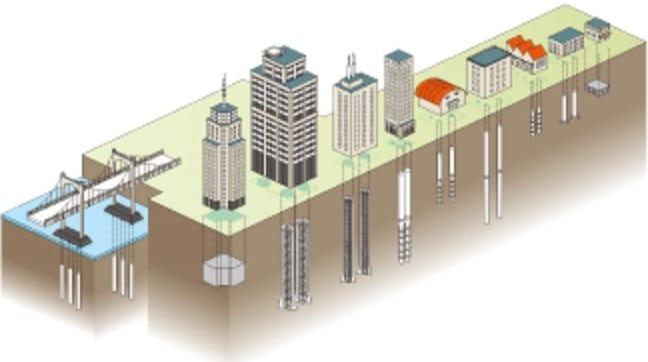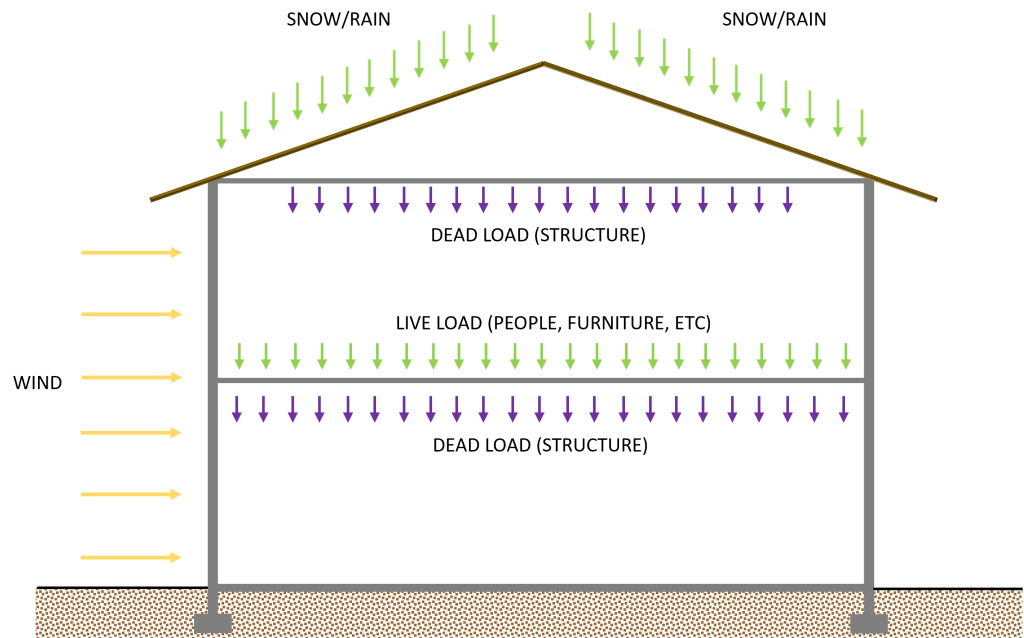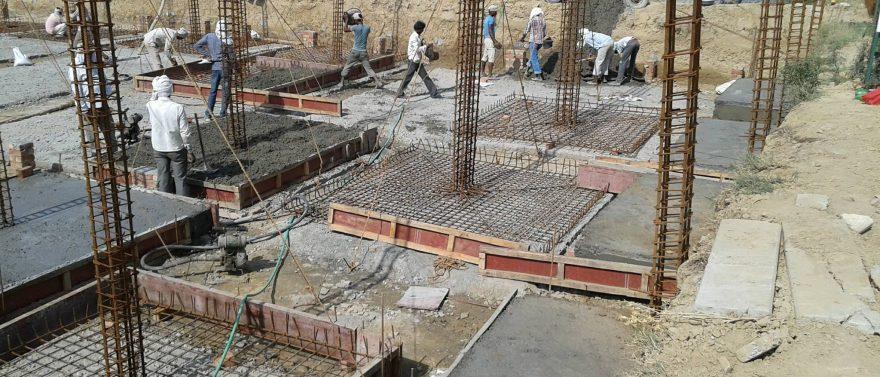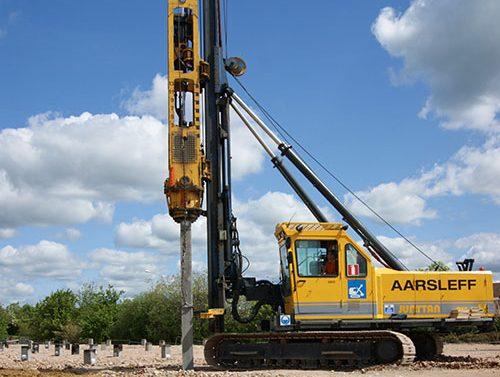|
The primary purpose of a foundation in structures is to distribute the loads acting on the structure and its weight safely to the ground. Whether the structure is a residential or commercial building, a skyscraper, or any superstructure, selecting the most suitable and favourable foundation design is vital for the overall safety and economical design. Although most structural engineers would opt for a shallow foundation type as they are cheaper and have ease of construction over a deep foundation type, multiple factors may influence the selection process. (Source: philosophyofcivilenginnering.wordpress.com) Choosing the correct type of foundation for the structure is vital in ensuring overall integrity. Qualified and experienced engineers need to verify the design of the foundation and supervise the construction to assure the quality of the structure and safety of the workers. There are various types of foundations, sizes, geographical and geotechnical scenarios but here are some of the essential factors to consider by the structural engineers: Load From the StructureOne of the main factors to consider in foundation design is the design loadings of the structure. These loads include dead loads (permanent loads including the weight of the structure) and live loads (imposed loads which may vary over time). Other loads, such as the wind, seismic, snow, and rain loads, may also be considered depending on the structure's location The materials used in the construction (concrete, reinforcing bars, steel, bricks, timber, etc.), the type of structure, and the number of floors significantly affect the quantity of loads on the structure. For instance, as the number of floors increases, the structure gets heavier, and the imposed loads also increase; thus, a substantial foundation is required. Estimating the settlement of the foundation, which is also related to loads of the structure, also influences the foundation selection. Generally, low-rise structures favour shallow foundation types, while high-rise and heavily loaded structures require stronger or deeper foundations. But still, there are more factors we need to consider selecting the proper foundation design. Site LocationAdjacent buildings of the structure, the existence of any bodies of water nearby, uneven ground or slopes, and geotechnical characteristics of the ground are also important factors influencing the choice of foundation design. Foundations of the neighboring building must be considered, especially when the surrounding structures are high-rise or old buildings. It is of utmost importance to protect the foundation of the nearby structures during excavation or construction of your chosen foundation type. For structures near rivers, lakes, or sloped ground, water table level must be accounted in the design, and special excavation protection must be practiced during the excavation. Previous use of the site or nearby areas must also be identified. Determine whether the structures were used as residential, commercial, industrial, or mining. This can determine if there are any obstructions, ground contaminations, or if it is safe to excavate the ground. Soil Bearing CapacityThe bearing capacity is the capacity of the soil to support loads that are applied from the structure to the ground. It is the maximum average pressure between the foundation and the supporting soil without producing shear failure and excessive settlement. Perhaps this is the most crucial factor to consider, as this usually dictates which foundation to use. Geotechnical engineers provide the bearing capacity of the soil, ground conditions, and other soil properties from their geotechnical report. They can recommend which foundation type can be used based on the loads from the structure. Typically, soil bearing pressure of 100kN/m2 or higher is adequate to support structures up to 4 stories high using shallow foundations, such as concrete footing. Higher structures can consider using raft foundations or deep foundation types. For concrete footing calculations, you may try SkyCiv’s Concrete Footing Calculator for free! Ease of ConstructionWhether shallow or deep foundations, every foundation type requires different intensities of labor, skillsets, equipment, and duration. The construction of a deep foundation is usually more complex and costly than shallow foundations. They require heavier equipment for logistics, boring and driving piles, and bigger storage. Proper construction and time management are necessary to identify and avoid potential problems and delays in constructing the foundation. The images below show the difference between the construction of concrete footing and precast piles. (Source: facebook.com/CivilWork) (Source: aarsleff.co.uk) Economic DesignWith all the factors mentioned above, engineers may still come up with more than one suitable foundation, or the selected foundation is beyond the project's budget. The cost of each foundation type varies in terms of how they are constructed, materials, the number of labourers, equipment, and duration. In this case, the structural engineer may design the cheapest foundation without compromising the durability, quality, strength, and safety of both the structure and the workers.
Comments are closed.
|
|
© Copyright www.engineer4free.com 2012 - 2024 All Rights Reserved
About | Course List | Patreon | Newsletter | Blog | ToS | Contact Engineer4Free is committed to sustainability. You should be too. |
|





 RSS Feed
RSS Feed